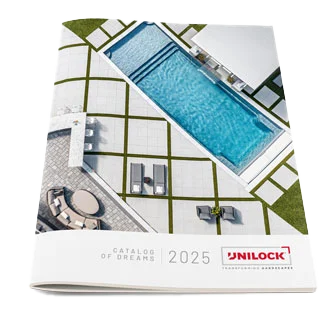8 Tips to Help Reduce Carbon Dioxide Emissions on Your Landscaping Projects
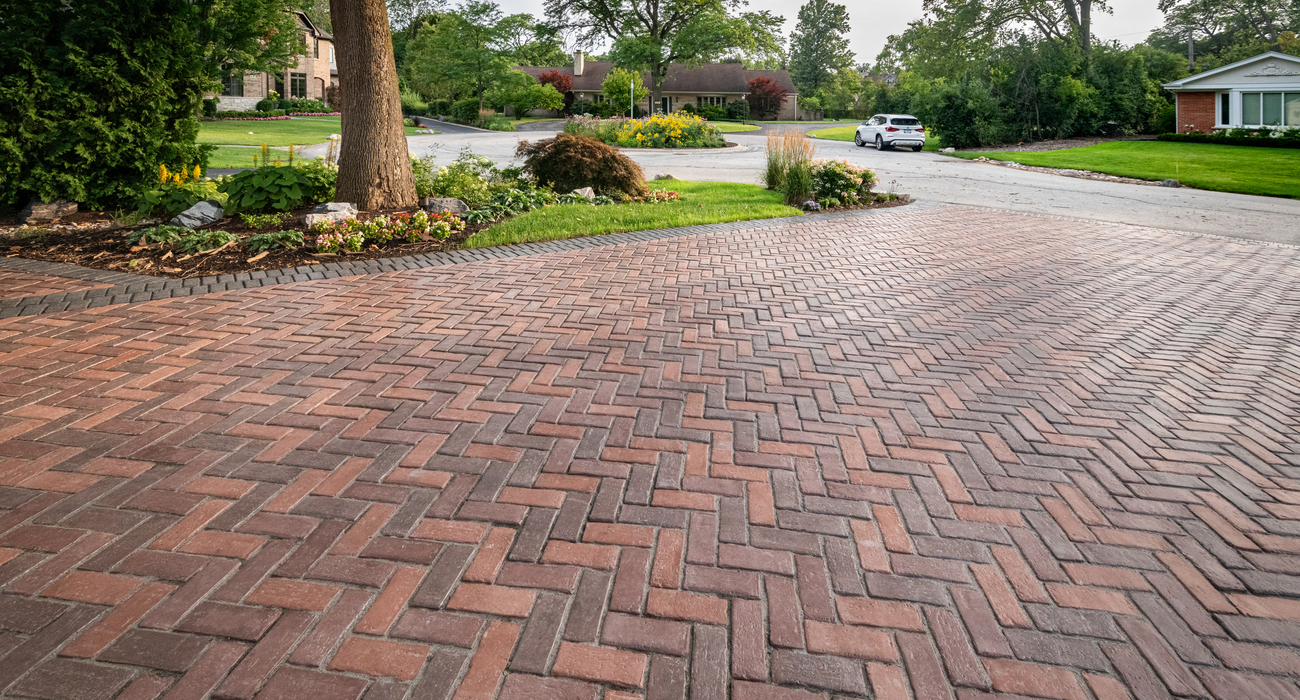
The conversation around climate change continues to grow louder, and for a good reason. The construction sector is one of the biggest contributors to global carbon dioxide emissions, which includes the materials and practices we use daily in landscaping and hardscaping projects. The good news is that as contractors, you have a unique opportunity to make a difference.
In this blog, we’ll explore actionable steps you can take to reduce carbon dioxide emissions at work. From choosing sustainable materials to upgrading your tools, these strategies will help you build better, greener spaces for your clients—while reducing your environmental impact.
1. Choose Sustainable Materials
Recycled and Reclaimed Materials
Using recycled or reclaimed materials is a great way to reduce waste while adding unique, eco-friendly elements to your projects. Recycled concrete, reclaimed wood, and recycled plastic decking are a few options that can reduce the demand for new raw materials and often have the added bonus of being cost-effective and readily available.
Low-Carbon Footprint Materials
When sourcing materials, it’s worth looking into products that leave a lower embodied carbon footprint. Materials like bamboo, cork, or low-carbon cement alternatives can be integrated into hardscape designs, and are perfect for clients seeking a more sustainable paving option without sacrificing strength and longevity.
2. Implement Green Construction Practices into Your Installation Plans
Efficient Construction Techniques
Efficient construction techniques, such as prefabrication or modular construction, can minimize both excess material waste and energy usage on-site. For example, the Unilock U-Cara® Modular System offers a labor-saving solution by providing aluminum-framed cabinets that simplify the construction of outdoor living features. These cabinets can even be assembled off-site, which means they’re perfect for transporting onto hard-to-reach project areas and can be installed in a few hours.
Another smart approach is just-in-time delivery, a strategy that ensures materials arrive exactly when needed. This minimizes the need for stockpiling on-site, reduces warehouse storage costs, and cuts down on fuel emissions from multiple deliveries.
Sustainable Site Management
Sustainability goes beyond the materials you choose—it also includes how you manage the jobsite. This means reducing site disturbance, preserving existing vegetation, and using erosion control measures that not only benefit the environment but also make your project more attractive to eco-conscious clients.
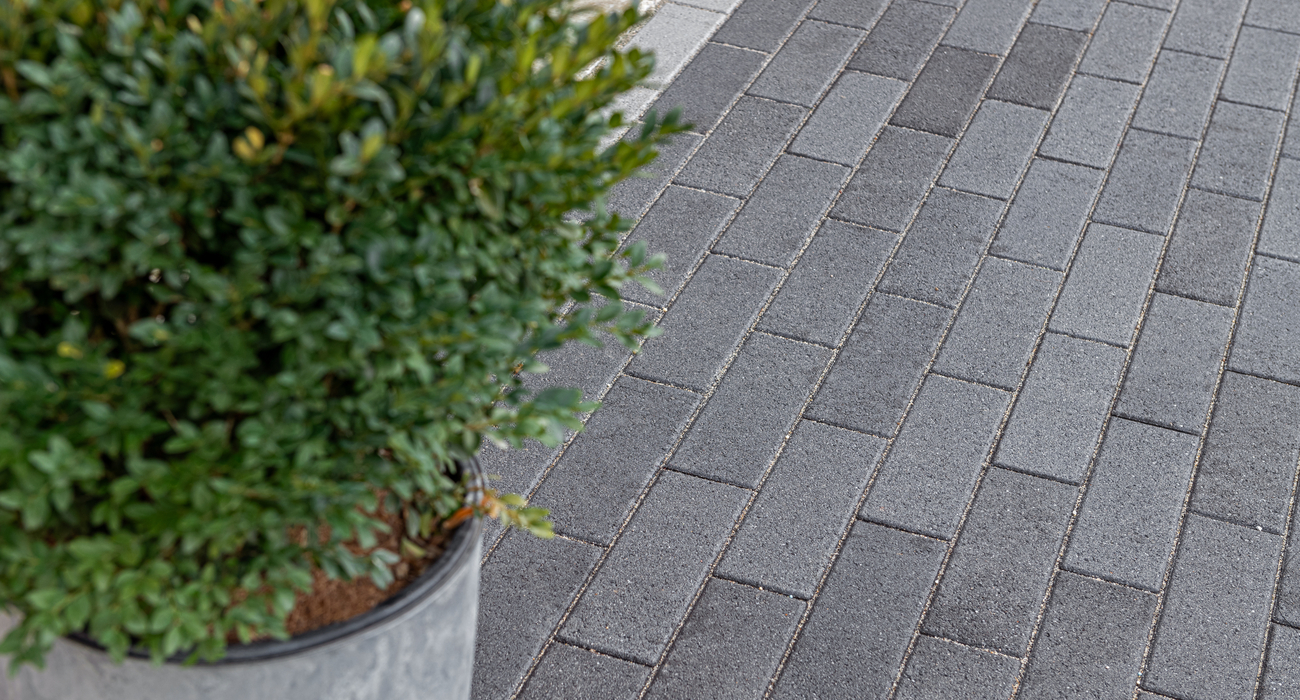
3. Consider Eco-Friendly Paving Alternatives for Your Projects
Permeable Pavers
Permeable pavers are becoming the go-to option for creating eco-friendly landscapes. Unilock permeable pavers are designed with special spacer bars that allow rainwater to seep between the joints, effectively managing stormwater runoff and recharging the groundwater below, helping reduce the strain on municipal systems. Another added benefit is their ability to mitigate the urban heat island effect, providing a cooler surface temperature that is more comfortable for homeowners.
Cement-Reduced or Cement-Free Concrete Technologies
Innovations like Unilock EcoTerra™ are pushing the envelope in terms of sustainable construction. By eliminating cement from the top layer of our pavers, EcoTerra pavers cut down on carbon dioxide emissions by up to 15%. Eco-friendly paving solutions like these are quickly becoming a key part of sustainable landscape design, offering the same level of durability while minimizing our carbon footprint.
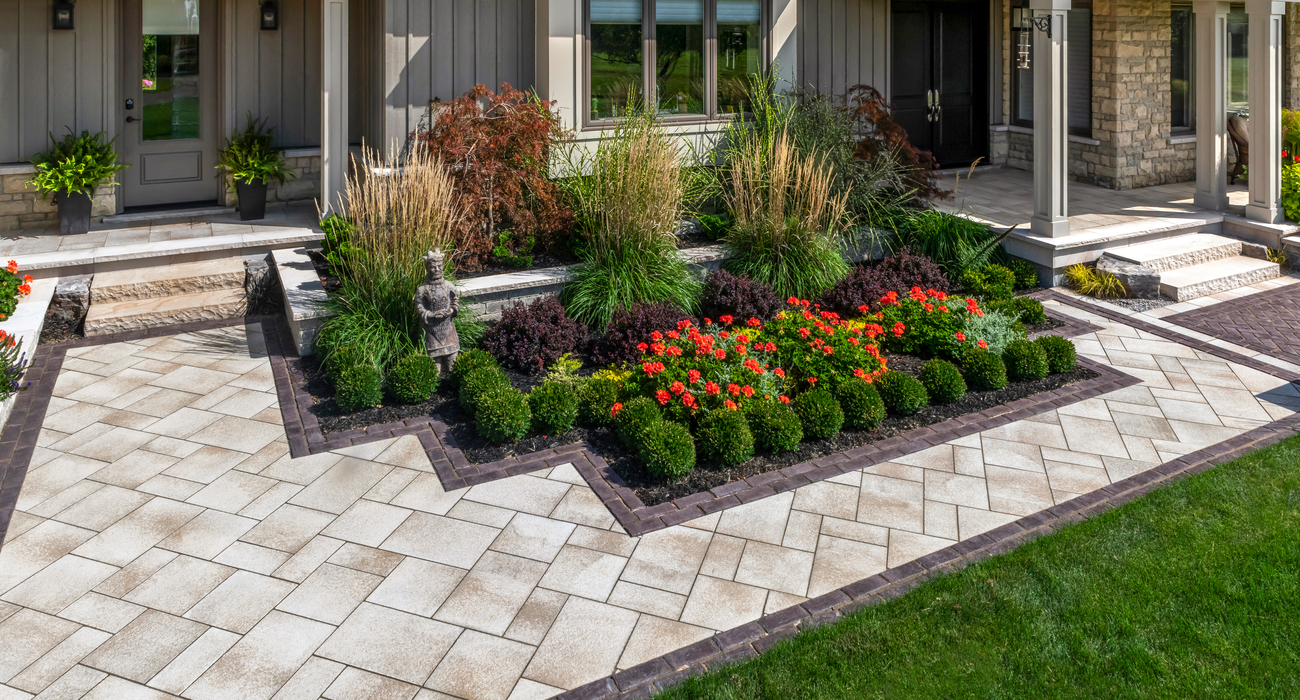
4. Enhance Nearby Green Spaces
Planting Trees and Shrubs
The integration of natural green spaces into landscape designs is essential in offsetting CO2 emissions. Trees,shrubs, and soils actively sequester carbon, making them a valuable component of any hardscape project. When selecting plants, opt for native species that are well-adapted to the local environment. These plants typically require less water, fewer chemicals, and minimal maintenance.
Creating Green Roofs and Walls
Green roofs and walls provide more than aesthetic appeal; they effectively absorb CO2 and enhance air quality. These living features also offer natural insulation and improve stormwater management. When designing green roofs and walls, select plants that suit the roof’s load-bearing capacity and environmental exposure. Utilize lightweight soil mixtures and ensure proper drainage to prevent water buildup. Regular maintenance, such as trimming plants and inspecting drainage systems, is crucial for optimal function and appearance.
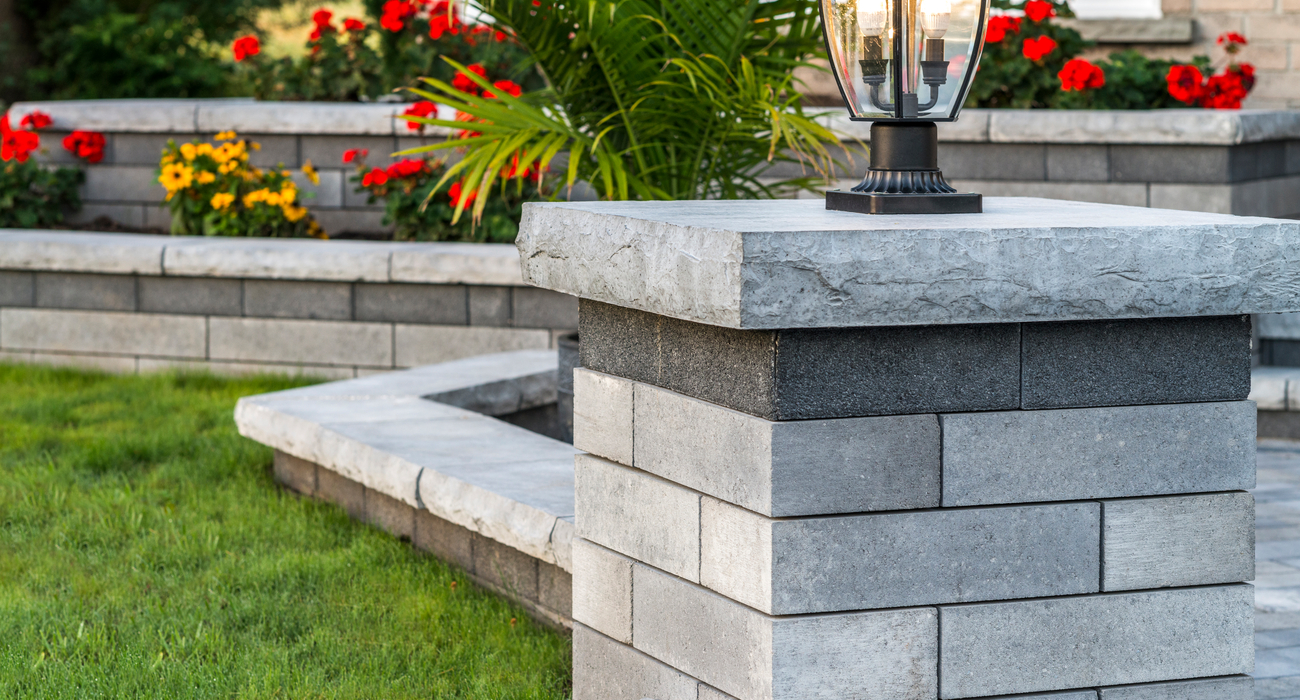
5. Promote Energy-Efficiency Solutions
Energy-Efficient Lighting
Switching to LED and solar-powered outdoor lighting is one of the easiest ways to reduce energy consumption on your project. These lights use less energy, last longer, and can be installed to highlight key landscape features.
Renewable Energy Integration
For eco-conscious clients, incorporating renewable energy elements like solar panels can further offset their carbon footprint. Not only does this reduce the need for non-renewable energy, but it also offers long-term savings for your clients in energy costs.
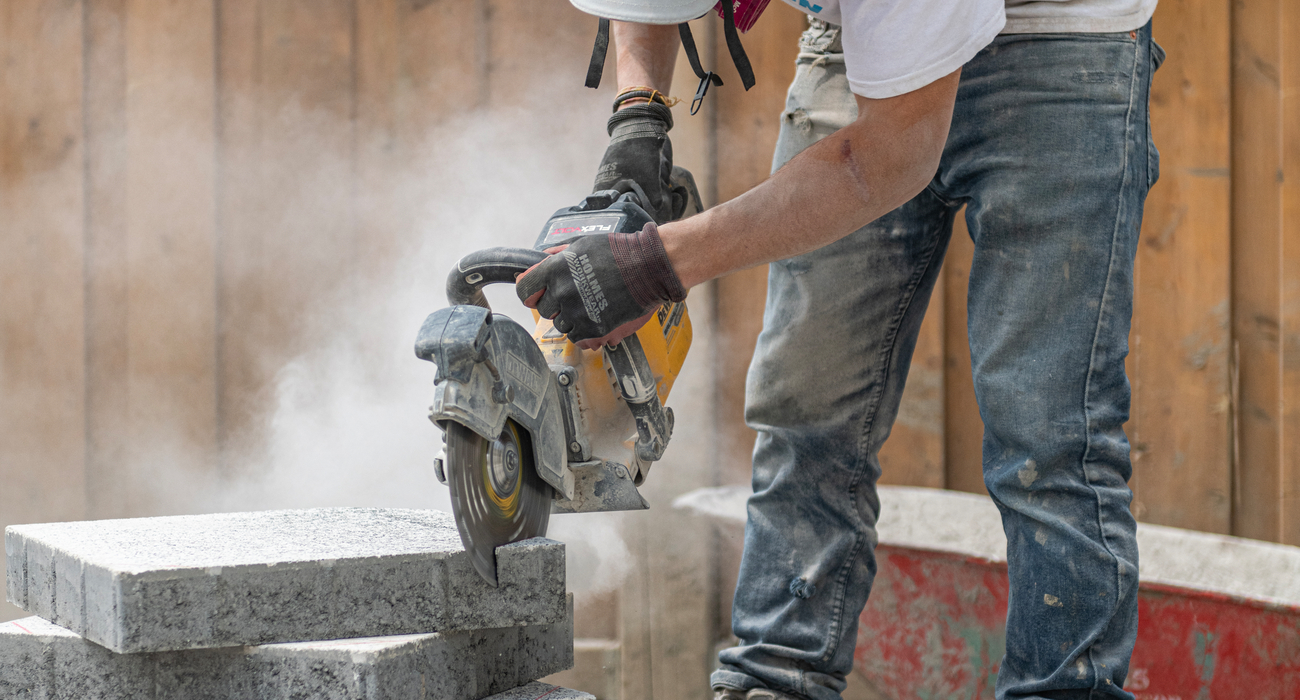
6. Reduce Equipment Emissions
Battery-Powered Hardscape Equipment
Battery-powered tools are becoming the industry standard due to their lower emissions, quieter operation, and reduced maintenance compared to gas-powered options. With advances in battery technology, these tools now deliver performance comparable to traditional equipment, without the environmental drawbacks. For instance, electric mowers, trimmers, and compactors not only reduce carbon dioxide emissions but they offer advantages in noise-sensitive areas like residential neighborhoods, helping contractors comply with local noise regulations. Manufacturers like Stihl and DeWalt are prioritizing longer runtimes and higher efficiency, making battery-powered tools a practical, sustainable choice for landscape contractors. Additionally, as landscape companies transition their fleets, many are planning to integrate electric trucks to further cut emissions and align with their sustainability goals.
Regular Maintenance
It’s not just about using the right tools but maintaining them, too. Regular maintenance ensures that your equipment operates at peak efficiency, which helps reduce emissions and extends the lifespan of your tools. Simple steps like cleaning filters, sharpening blades, and checking fluids can make a big difference in performance and sustainability.
7. Implement Sustainable Water Management Systems
Rainwater Harvesting
Rainwater harvesting systems are a smart solution for reducing reliance on municipal water supplies. Collecting rainwater for irrigation or other non-potable uses can make a big difference, especially during dry spells. For contractors, installing these systems is an efficient way to add sustainability and value to projects.
Efficient Irrigation Systems
Drip irrigation and smart controllers are effective ways to minimize water waste in landscaping projects. They allow for precise watering, reducing the amount of water used while ensuring that plants receive what they need to thrive. Pair these systems with mulch to further reduce evaporation and conserve water.
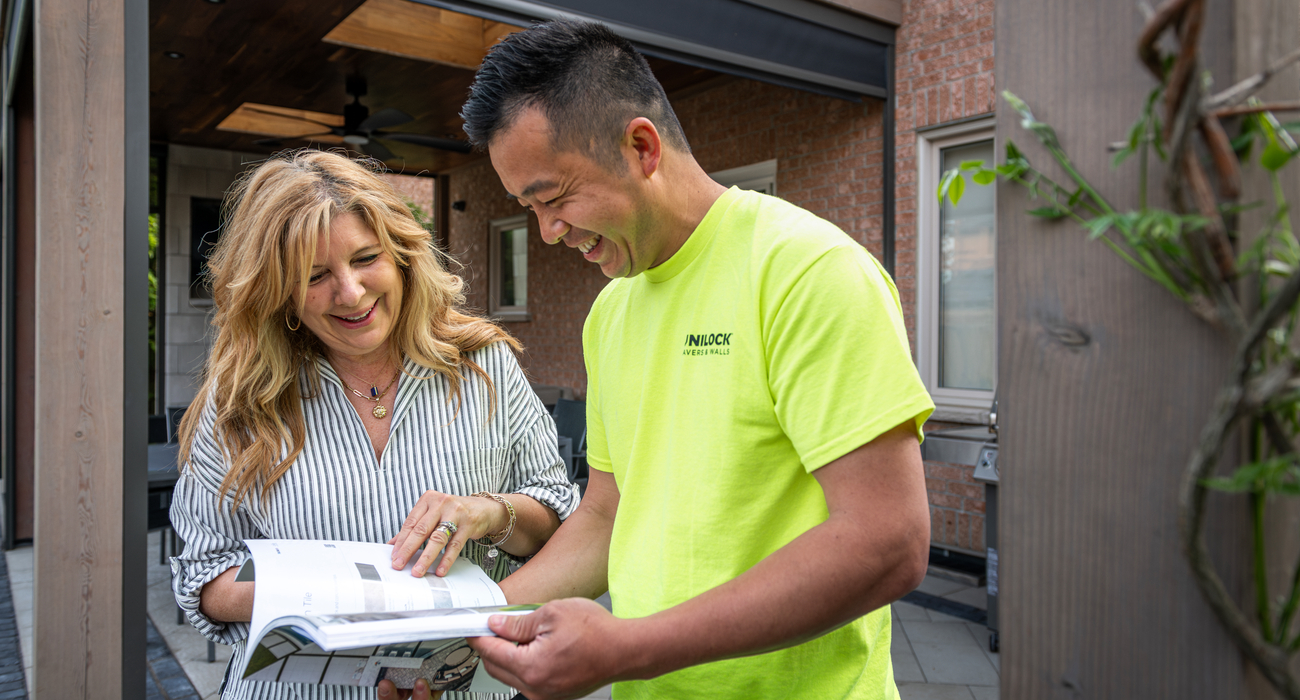
8. Educate Your Clients on Sustainability
Communicating Benefits
Educating and communicating with your clients about the long-term environmental and economic benefits of sustainable practices can help them see the value in making eco-friendly choices for their homes. Whether it’s reduced water use, energy savings, or lower carbon footprint products, these benefits resonate with homeowners looking to make responsible, cost-saving decisions.
Involving Clients in Green Initiatives
Encourage your clients to get involved in sustainability efforts, from selecting recycled materials to opting for energy-efficient designs. Providing them with resources and information about ongoing sustainability practices can help them maintain a greener home long after your project is complete.
Reducing carbon dioxide emissions in hardscape and landscape projects isn’t just about being environmentally conscious—it’s about future-proofing your business. By choosing sustainable materials, adopting green construction practices, and educating your clients, you can lead the way toward a more sustainable future.
If you have any questions about sustainability and implementing greener solutions for your business, connect with your local Unilock Territory Manager to learn more.
